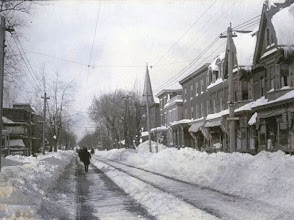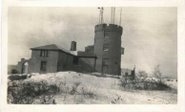Winter '22 / '23 - An over-the-horizon look at early autumn's a priori climate conditions
 |
| near Woodstock ... VT Marion Post Wolcott (1940) |
- The stars have yet to align for snow crows and other winter wx enthusiasts.
- Above-normal temperatures and below-normal snowfall for most NEWxSFC/s stations.
> User assumes all risk.
> Not intended for use by children.
---
Decoder Ring
AO: Arctic Oscillation
CONUS: Continental United States
D-J-F: December-January-February
ENSO: El Niño - Southern Oscillation
EPO: Eastern Pacific Oscillation
M-A: Mid-Atlantic
NE: New England
NAO: North Atlantic Oscillation
NHEMI: Northern Hemisphere
NWP: Numerical Weather Prediction
PDO: Pacific Decadal Oscillation
QBO: Quasi-Biennial Oscillation
PNA: Pacific-North American pattern
SSTa: Sea-Surface Temperature anomaly
SSW: Sudden Stratospheric Warming
---
To the extent ENSO ... QBO ... SSTa in the tropical Pacific and the NE coastal waters of CONUS ... sunspots ... PDO ... and the extent of Eurasian cover have any predictive value ... here laid upon the table is the current state of play heading into Winter '22 / '23 as divined from NEWxSFC/s Whirled Headquarters located east of the fall line in VA.
---
ENSO
Output from the latest dynamic and statistical modeling predict moderate La Nina conditions (SSTa between -1 and -1.5°C in ENSO Region 3.4) to persist throughout Winter '22 / '23.
La Nina loosely favors below-normal snowfall over the M-A .... above-normal snowfall across the northern tier of the NEWxSFC forecast area ... and a toss-up for stations in between; however ... this historical model did not verify for the two most recent La Nina winters ('20 / '21 and '21 / '22) where above-average snowfall fell over northern portions of M-A in '20 / '21 and coastal stations plus CAR in '21 / '22.
---
QBO
The zonal wind direction near 30 mb over the tropics (~80K' above sea level) determines the QBO phase. Positive (negative) values denote a west (east) zonal wind. Zonal winds blow parallel to lines of latitude. QBO is currently west (positive) and will remain west (positive) throughout Winter '22 / '23.
QBO-W during La Nina correlates well with a strong and stable stratospheric polar vortex (PV) ... strongly negative PNA (trough out west; ridge in the SE) ... and +NAO. None of these indices in their present and predicted future state favor a cold and snowy winter in the eastern CONUS.
The current consensus of QBO-W analogs expect a monthly mean zonal wind between 5 and 12 mps. QBO-W of no higher than 12 mps purportedly does not inhibit hi-latitude blocking. Hi-latitude blocks favorable for cold and snowy over NEWxSFC/s forecast area include Greenland (-NAO) ... ridging over the pole (-AO) ... -EPO ... and +PNA.
The relatively few major mid-winter SSWs observed during QBO-W took place only when the monthly sunspot count was 'high.'
Sunspots ... as of 9/30/22: 96 (within +1 standard deviation of the mean ... i.e., not 'high').
---
SSTa
The strong positive anomalies off the NHEMI/s NE coast favors NAO > 0.
Positive anomalies off the NHEMI/s NW coast favors long wave ridging; however ... the effect could be minimized by La Nina troffing in the same vicinity.
---
PDO
The current cool phase favors above normal heights ... i.e., ridging ... over SE CONUS; however ... the PDO temperature anomalies along the west coast of North America this fall are at odds with the typical -PDO conceptual model ... i.e., warm anomalies instead of cool anomalies.
The anomalously warm coastal waters in the northeastern portions of the North Pacific are more typical of PDO/s warm phase favors +PNA.
---
EURASIA snow cover
Above-normal snow cover in OCT over Eurasia has a weak but statistically significant correlation with above-normal snowfall over NE.
As of 30-SEP ... snow cover was ~60% above normal. This ranks 6th during period-of-record (1967 - 2022). It's the highest areal extent since 1998 (~25 years ago). OCT/s snow cover started out strong but faded quickly to where it's near the bottom of the pack ... as of mid-OCT.
---
What's it all mean Mr. Peabody?
Moderate D-J-F La Ninas are rare birds looking back over last 50 years meaning there's little hard data to lean upon. Teleconnection analogs in general are contradictory. Seasonal NWP guidance can be overly influenced by initial conditions.
No reason for optimism as yet for a return to winters-of-olde or even for one without frustrating bouts of shorts'n tee-shirt weather. Maybe OCT/s data will have a different story to tell ...























No comments:
Post a Comment